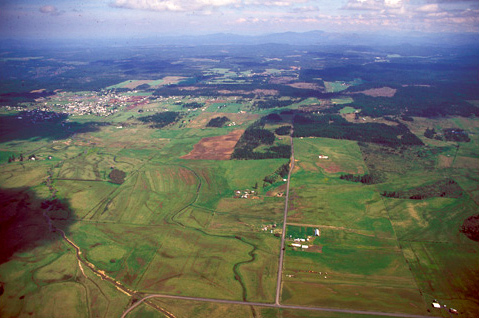For countless generations, Weippe Prairie (prounouced WEE-yipe), like Travelers’ Rest, was a major node in the transportation, trade, and social networks of the Rocky Mountain West. Indians routinely covered the 140 miles between these two terminuses in “five sleeps,” or six days, but it took the Corps of Discovery eleven cold, wet, painfully hungry days on their late-season westbound journey. On 18 September, two-thirds of the way through the mountains, Clark and six hunters pushed ahead of the main party in search of fresh meat. Two days later they left the mountains and “proceeded on through a beautifull Countrey . . . to a Small Plain” in which there were many Indian lodges. On the twenty-second, Lewis and the rest of the Corps arrived here, elated at having “tryumphed over the rocky Mountains.”
At Weippe Prairie, the explorers also experienced the hospitality–albeit tentative at the outset–of the people called Nez Perce, in an unfortunate misinterpretation of a sign-language gesture that seemed to indicate that they had “Pierced Noses.” Subsequently, French traders translated their manual sign into Nez Perce, pronounced in current English “nez-PURSE” or “NEZ-purse” not “nay-per-SAY”). The Nez Perce call themselves Tsoop-nit-peloo, “The Walking-Out People,” or Nee-me-poo, meaning “The People.”
On their homeward journey, the Corps returned to Weippe Prairie on 10 June 1806. At the time, the prairie was awash in camas flowers; the blue blossoms rippling in the breeze reminded Lewis of “lakes of fine, clear water.” Indeed, this was a major source of the delicious, nutritious bulb of the camas–a wild vegetable equal in status to the potato for many Americans today. Ordway noticed that the soil was “very rich and lays delightful for cultivation.” Indeed it is, and that is why agriculture has permanently altered the prairie’s ecology.
See also The Weippe Prairie Villages.
From Discovering Lewis & Clark from the Air
Photography by Jim Wark
Text by Joseph Mussulman
Reproduced by permission of Mountain Press

